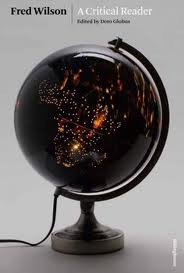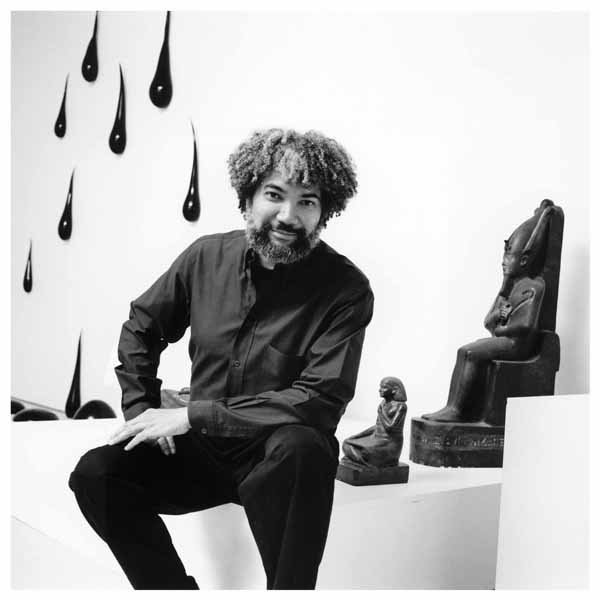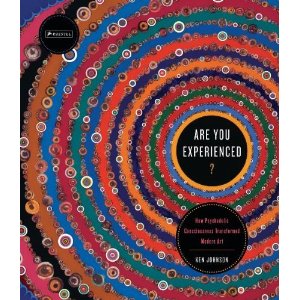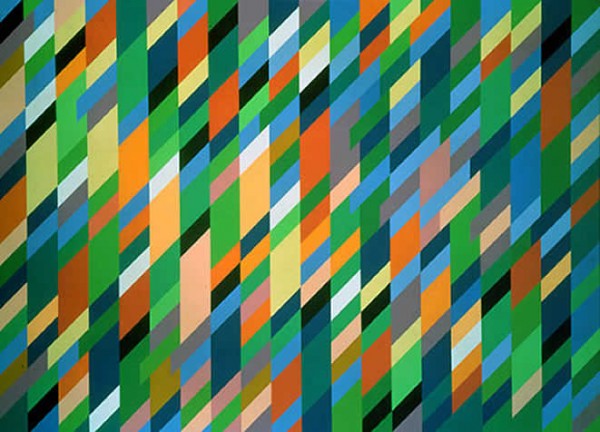Looking at two new books that recently landed in my lap, I’m reminded of Dave Hickey’s description of the therapeutic institution. That would be the museum or ICA or biennial whose displays were, like nasty tasting medicine, supposed to be “good” for the viewer. In contrast to such visual puritanism, Hickey argued for exhibitions whose visual beauty seduced and directly communicated to viewers. Thus empowered to enjoy art because they liked it, visitors no longer would need densely worded labels, whose sole purpose seemed to be that of guilting the public into submissive appreciation of work that couldn’t stand on its own.
The therapeutic book on the table focuses on Fred Wilson’s art. Fred Wilson: A Critical Reader is published by Ridinghouse, a project of Karsten Schubert Gallery, London. Although Karsten Schubert this year presented a retrospective of objects made by Wilson between 1993 and 2011, the artist’s most recent museological intervention—in the vein of his landmark, 1992 Mining the Museum—was the 2007-08 installation, An Account of a Voyage to the Island Jamaica with the Un-Natural History of that Place at the Institute of Jamaica Gallery in Kingston.
The collected essays impart the sense that Wilson’s Warholian moment has all but passed. The introduction by Lowery Stokes Sims argues for his continued influence but, again, the other writings don’t bear that out. Even the most recent essay, from 2011, dwells on Mining the Museum and on Wilson’s assertions about the unspoken colonializing agenda of collecting institutions. Otherwise, the most recent writing dates to 2008 and Wilson’s Jamaica intervention.
Maybe my perception of the book’s elegiac tone simply stems from poor editing. It’s certainly not wishful thinking: Wilson’s critiques of display have been and, I hope, will continue to be an important influence on my own perception of ways in which art is presented. But editor Doro Globus offers no explanation (actually, there’s no editor’s statement, period) of why certain essays—particularly two, highly redundant writings by the same author—were chosen and others not. There’s no sense here that Wilson’s identity-focused art has moved into a post-identity era; no sense of what he might have to say about the current state of museum exhibitions. Instead, ideas that are 12-to-15 years old are expressed in the scolding academic language Hickey has made a career deriding.
The book’s material personality is consistent with its verbal character. Published in utilitarian paperback, it measures a chunky 8.5-by-5.75 inches, by 1.75 inches thick: clearly intended for the bookshelf, not the coffee table. Most of its 504 pages are dense with text: 85 pages of images are found at the end, just before the index. There’s no list of exhibitions.
The appearance of our second book couldn’t be more different. Published in hardcover by Prestel, it has the dimensions—11-by-9.5 inches, by one inch thick—and graphically arresting cover of a coffee table book. And its title, Are You Experienced: How Psychedelic Consciousness Transformed Modern Art, couldn’t be catchier. Its author is Ken Johnson, whose writing about art for The New York Times points to accessible language. But Are You Experienced isn’t a fluffy publication. It’s substantive and the ideas that it argues make sense.
Probably the most intriguing is Johnson’s up front assertion that minimalism needs to be considered in the context of a dope-smoking ability to be easily amused. In his introduction, Johnson says:
“Many years ago, I used to puzzle over certain kinds of art that seemed boring to me—Minimalist sculpture and other styles that offered little by way of conventional aesthetic or imaginative excitement. … Then I began to think, what state of mind would I have to be in to enjoy those types of art? What if, for example, I were stoned?”
In other words, while Johnson’s book features any number of eye-popping images of art works by the likes of Warren Isensee, Bridget Riley and Robert Colescott—all sprinkled throughout to accompany the verbal text—it really isn’t about stoner art. It’s about how a culture influenced by consumption of mind-altering drugs was able to engage with kinds of art that a previous culture could not have accommodated.
With both book and the works it describes characterized by their visual beauty and ease of access, it should be no surprise that the back cover of Are You Experienced? features a blurb by Hickey. “Most critics, myself included, have grabbed the tail of the psychedelic elephant or fondled its trunk,” Hickey writes. “Johnson sketches the whole beast in all its power and grandeur.”
Which begs at least a few questions. Do Dave Hickey’s ideas about therapeutic art continue to be relevant? Is art in a post-identity era? What about Fred Wilson: what impact has his work had on how objects are displayed? What kind of enduring influence does his work have on contemporary art-making?







